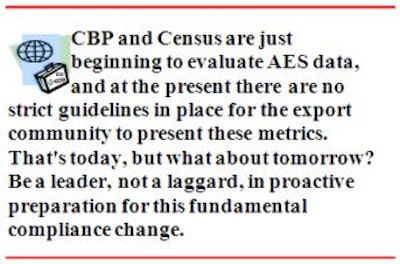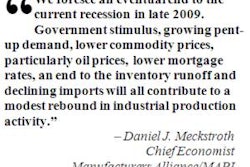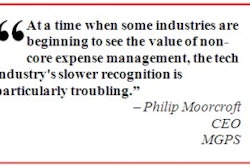
Export controls have existed in some form since the beginning of civilization. Societies have always had a need to protect their security and allocate limited and strategic resources by enacting export control measures. For example, the exporting of crossbows was prohibited in medieval times as they could give rival fiefdoms a significant military advantage, and the export of gunpowder from China was prohibited in 900 A.D. Export controls are greatly influenced by world events and ever-changing political regimes. Ongoing external conflicts, a new U.S. political administration and the use of increasingly sophisticated technology will drive a more granular focus on cross-border trade involving a deeper cooperation among federal agencies.
U.S. Export Controls History
In 1774, the United States' First Continental Congress convened in Philadelphia and the following December declared the importation of British goods to be illegal. Twelve months later the U.S. Congress outlawed the export of goods to Great Britain, thus establishing the first American export controls. Since then, the United States has imposed export controls for a variety of reasons through legislation such as the Embargo Act, Trading with the Enemy Act, the Neutrality Act and the Export Control Act. In reaction to Japan's occupation of parts of Indo-China in 1940, the U.S. Congress passed the Export Control Act, which forbade the exporting of aircraft parts, chemicals and minerals without a license.
The Export Control Act of 1949 gave the U.S. Department of Commerce primary responsibility for administering and enforcing export controls on dual-use items — items that can be used for both commercial and military applications. For the first time, this act defined three reasons for the imposition of export controls: to bolster national security, supplement foreign policy and protect short supply of resources. This act was created to impede the economic and military development of the "Communist Bloc" countries after the Axis powers had been defeated in World War II. Upon the expiration of the Export Control Act, the Export Administration Act (EAA) of 1969 took effect on January 1, 1970.
Global Conflicts Breed Changes to Export Controls
The last 30 years have seen significant changes in U.S. and international export controls. One of the cornerstones of the Reagan foreign policy in the 1980s was to stress multilateral controls against exports to the Communist Bloc, as opposed to the unilateral export control emphasis that had been in place since the Cold War. These multilateral export controls involved cooperation and support of other nations allied with the United States. These multilateral export controls were agreed upon and implemented with European and Asian allies and were considered to be a major factor in the fall of the Soviet Union in 1991. With the Soviet Union no longer in existence, the U.S. government became aware of the potential threat posed by rogue states that endorsed international terrorism — a threat confirmed 10 years later by the Al-Qaeda actions on September 11, 2001.
A major benefit of multilateral export controls is that they provide a united front with multiple countries collectively promulgating export controls to limit exports to end-users who pose a global terrorist threat. Multilateral export control cooperation is sought through several arrangements such as the Wassenaar Arrangement, Nuclear Suppliers Group, the Australia Group and the Missile Technology Control Regime.
Currently, the Export Control Act of 1979 is expired and the International Emergency Powers Act (IEEPA) is being used until a new act is approved by the U.S. Congress and signed by the President. It is too early in the Obama administration to determine what measures the new president will take regarding export controls. The recent global economic downturn and the threat of "unforeseen" terrorist events affect the emphasis and strategy of such controls. These events could well take place in Pakistan, Iran or a "black swan" location — a location hard to predict.
Current U.S. Export Control Environment
The existing U.S. export control environment is very complex. There are a myriad of rules and seemingly contradictory regulations issued and administered by multiple agencies of the U.S. federal government. The Bureau of Industry and Security (BIS) is responsible for implementing and enforcing the Export Administration Regulations (EAR), which regulate the export and re-export of most commercial items. These regulated items are often referred as "dual-use" because they have both commercial and military or proliferation applications; however, purely commercial items with no apparent military use are also subject to the EAR. The U.S. Department of State Directorate of Defense Trade Controls (DDTC) has authority over defense articles and services and is responsible for implementing and enforcing the International Traffic in Arms Regulations (ITAR). There are various other governmental agencies, such as the Department of Energy and Food and Drug Administration, which have responsibilities for specific export controls and these can be found in Supplement No. 3 to Part 730 of the EAR.
There are several recent events which will have a profound effect on U.S. export compliance for the foreseeable future: mandatory filing of Shippers Export Declarations (SED) through the Census Department's Automated Export System (AES) offered by the U.S. Census Bureau within the Department of Commerce, increased penalties for export compliance violations, and increased inter-governmental cooperation to enforce various export control laws and regulations.
What may be most interesting, and not noticed by many in industry, is that there is a new sheriff in town and his name is U.S Customs and Border Protection (CBP). In the past, CBP did not take a major active role in enforcing the accuracy of the SED information submitted by exporters due to manpower constraints and a traditional emphasis on imports and "protecting the nation's revenue." CBP and Census will now play a dual role of good cop/bad cop in enforcing EEI (Electronic Export Information) data transmitted via AES. Industry should be well aware of Census's approach to emphasize education in maintaining adherence to the new Foreign Trade Regulations (FTR). The key question is what approach and strategy will CBP take in this area?
Customs and Border Protection's Approach to Export Controls
If one had to guess, one could assume that CBP would approach the enforcement of export controls in a similar manner as to how they manage imports into the United States — with an emphasis on statistical sampling or metrics. To understand the background of this statement, let's quickly review what is commonly referred to as the Customs Modernization Act (Mod Act) enacted by Congress in 1993. The Mod Act is based on two basic tenets: shared responsibility and informed compliance. Shared responsibility means that importers and CBP have a mutual responsibility to ensure compliance with cross-border trade and customs laws. The purpose of informed compliance is to maximize voluntary compliance, which imposed many publication, consultation and notice obligations on CBP. The Mod Act fundamentally altered the relationship between industry (importers) and customs organizations (CBP) by shifting the legal responsibility for declaring the value, classification and rate of duty applicable to entered merchandise to the importer and also requires importers to use reasonable care to ensure CBP is provided accurate data on a timely basis. CBP retains the ultimate responsibility to "fix" the value, classification and rate of duty. Informed compliance is based on the premise that in order to meet their responsibilities, importers need to be clearly and completely informed of their legal obligations. Under the Mod Act, CBP spends more time and uses more effective methods to inform the public of their actions with the ultimate goal to maximize voluntary compliance and reduce the number of instances where "enforced" compliance is necessary.
Now, back to exports! In the paragraph above, replace "imports" with "exports." The basic tenets of informed compliance and shared compliance still apply. For all practical purposes, most U.S. importers believe shared compliance means industry takes most of the compliance burden and must prove their compliance to CBP using statistical sampling (metrics) and other internal compliance controls. Most U.S. exporters do not have statistical sampling methods to grade the accuracy of the data they transmit to Census via AES. The good news is that CBP and Census are just beginning to evaluate AES data, and at the present there are no strict guidelines in place for the export community to present these metrics. That's today, but what about tomorrow? Be a leader, not a laggard, in proactive preparation for this fundamental compliance change.
A Guess at the Future of U.S. Export Controls
What will statistical sampling look like on the EEI data? Probably very similar to what is required on the CBP Form 7501 (U.S. Customs entry); CBP's statistical sampling methodologies for many of the import data elements can easily be tweaked and applied to exports. A much greater burden will be placed on the exporter in the areas of jurisdiction, classification, end-use and record keeping. An increasing number of exporters will be audited; it is quite possible that many will be found not to have been in compliance with FTR in the past. Non-compliance with these regulations can lead to increased fines and penalties as mentioned earlier in this article. Companies that proactively find, correct and report these problems before discovery by CBP and Census illustrate the use of "proper" export care and help protect their companies against penalties and increased inspections.
Is the possibility of increased mandatory export metric data requirements a certainty for industry in the future? Absolutely not. However, it logically appears this will be one of the enforcement directions the CBP and Census will take beyond what Census statistics are already being kept. U.S. exporters should be aware that the gun has gone off and there is a new export controls race.











